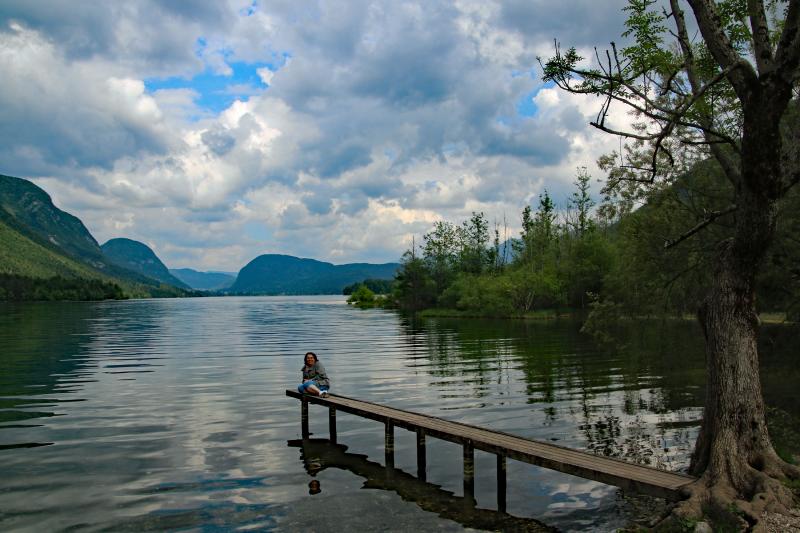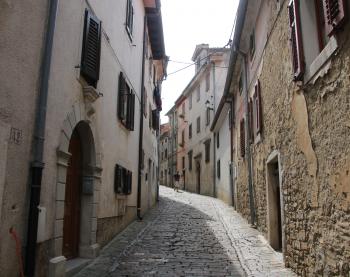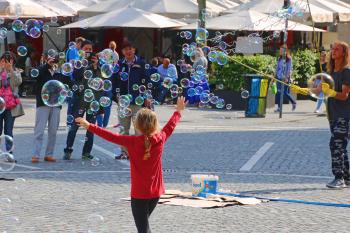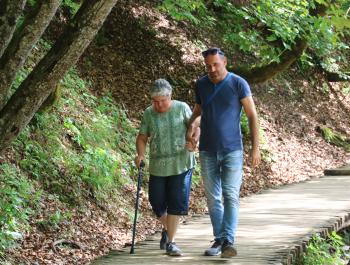Finding serenity in Slovenia
This article appears on page 35 of the June 2019 issue.
I sat and watched as my wife, Betty, sat there talking to our friends from Canada. Her cane, now a constant companion, was by her side, and I thought about how far she had come from paralysis from the waist down only a year before, with a jumbled mind and a shattered view of the future, to sitting at a table in probably the cleanest city in the world, Ljubljana, Slovenia.
Our June 2018 travels consisted of two back-to-back trips. The first was concentrated in Slovenia, with a short excursion into the interior of Croatia, and the second was on a boat that skirted the Croatian coast.
Starting in Slovenia
I had traveled to Slovenia not knowing what to expect. I suppose my views had been formed by stories of WWII and by simply filling in my areas of ignorance with a lot of guesswork. Turns out I was wrong on all counts.
With only two million people in the entire country and prosperity just around the corner, Slovenians have the freedom to welcome visitors, and they are very proud of their country. Their pride showed in the words they used to describe their lives, the life of the city and their outlook on the future.
The relatively recent wars in the area left Slovenia unscathed. There was no visible sign of their brief involvement in the conflict, and the medieval towns are in their original states. (In Croatia, that is not the case. Evidence of the conflict exists and, in some cases, has been left intentionally.)
The center of Ljubljana reminded me to some slight extent of Disney World, where everything is spotless; the buildings are clean, the streets are clean, the waiters are friendly, the people are friendly, and everybody seems to be happy. The difference is that this was not Disney World, where each day is scripted to please the visitor. It was just everyday life in Ljubljana.
One morning we walked from our hotel to the center of town (everything is within walking distance). In a large square paved with cut stone was a man blowing thousands of bubbles, with squealing kids running through them and trying to grab as many as possible. You could see the joy on their faces. Around the edges stood parents, grandparents, bystanders and tourists, all of them just enjoying the sight of these kids having so much fun.
While in Ljubljana, our two friends with whom we were traveling took a free tour of the city and ended up with as much information as we did on our paid version. (If you go, take the free one!)
First impressions
Think of Germany, the Alps and farmland, then think about Italy with its medieval villages perched atop steep hills. Roll all that together and you get Slovenia.
One of the kindest (and possibly the happiest) Slovenian we met was our guide, Sanjin Cernos. Sanjin started out studying geography and history but found that a job teaching geography turned out to be harder than he anticipated. He turned to guiding travelers, and, he shared, it was one of those forced decisions that turned out to be very good… for him and for us!
Each morning, there was a market in town with fruit and vegetables from two sources, one commercial and the other, private farms. You could tell the difference by a sign posted on the front of each table. The produce on the farm tables was not picked a day before but an hour before, and it showed. By noon, the market was gone except for a few flower vendors.
Slovenia is not cheap, nor is it expensive. To me, it seemed just about right, and we got what we paid for. On the other hand, the wine was cheap, and it was extremely good. Next to none of the wine is exported, and we did our part to ensure some of it stayed in Slovenia (except for the two bottles we brought home).
Village visits
From Ljubljana we went to Bled. As soon as we passed out of the city, we were in the countryside. There was little transition from one to the other. There were no used car lots, strip malls or industrial areas to inform us of the transition. Poof! We were suddenly driving past green fields, stacks of uniformly cut firewood and drying racks for hay.
Each village we visited reminded me of a medieval village of my imagination. The streets were not straight, the pavement was stone, moss grew in the shade, and everything was made of hewn stone. Shops were tucked into little corners or in the basement of some building with access from the street.
Even Kropa, an iron-forging town, was neat and clean although, I have to admit, a little more industrial than most, as one might expect. Still, the river that runs through the town invites you to stick your hand into it.
Each day brought more villages, more castles and more lakes, and each one was worth visiting.
In no case did we encounter throngs of tourists. It was quiet and peaceful everywhere we went. Though I’d guess that will not last as more people become aware of what Slovenia has to offer.
Plitvice
It is hard to settle on a highlight of our trip to Slovenia and Croatia, which we booked through Adventures Abroad (Blaine, WA; 800/665-3998, www.adventures-abroad.com), but if I had to pick the most spectacular one, is has to be our visit to Plitvice Lakes National Park in Croatia.
To tell the truth, I don’t recall much about where we stayed, where we ate or the town. Perhaps this is because of the sheer beauty of the 16 lakes we had gone to visit.
Unlike at most of the places on our itinerary, there were four or five tour buses in the parking lot at Plitvice, but the place is huge (no, really, it is huge), so it didn’t feel crowded at all.
The water that forms the falls that flow into the lakes is saturated with calcium carbonate, which forms travertine when the compound is deposited in layers. The steep incline of the mountain causes the water to rapidly flow downhill, bringing trees and branches with it. These trunks and branches get lodged in various places as they get washed downhill, and they start to get covered with calcium carbonate, forming a dam and creating a small (sometimes large) lake behind them.
This process continues, and eventually there are thousands of waterfalls all over the wide canyon. Everywhere we looked, crystal-clear water rushed by us. The place was stunning!
Most of the pathways through Plitvice consist of wooden stairs, so Betty required help navigating much of it. Sanjin took her hand and helped her through the entire park. This worked out well for both of us, as I was able to take pictures and Betty was able to rest when needed without worrying about me.
On our last night of this 9-day tour ($6,750 for the two of us), we stayed in a hotel in Opatija on the Croatian coast. We invited Sanjin to join our friends and us in celebrating an excellent trip. We had a couple bottles of Slovenian wine, and the five of us finished them off in an atmosphere of old friends.
Slovenia had never been high on our list of places to go, but had we known what was there, it would have moved almost to the top. (Antarctica still reigns supreme.)
I would recommend a visit without reservation. There was nothing during our entire trip that I would have changed.
Some of that success must be laid at the feet of Sanjin because of who he is, but the rest goes to Slovenia herself.
Next month, Bill and Betty Reed continue their journey, exploring Croatia’s coastal cities by boat.




